New Mexico Tech Lunabotics team competes at Kennedy Space Center
May 22, 2024
See below for a gallery of images and screenshots.
The NMT Team and lunar robot before one of the challenge runs. Robot operators in the pit wear protective clothing and respiratory gear as the simulated moon dust is irritating to skin and lungs.
The New Mexico Tech Lunabotics team travelled to Florida last week to take part in NASA’s 2024 Lunabotics Challengen (May 14-17). They were one of 50 teams selected to compete from around the U.S. After the qualifying rounds at University of Central Florida, the Tech team did well enough to qualify for the Top 10 and a chance to compete in the final two-day challenge at Kennedy Space Center.
This two-semester event encourages students to design and build a robot designed to traverse the simulated Lunar surface and complete the assigned construction tasks. The technology and engineering developments are in support of the Artemis missions to send humans and equipment to the moon. Designs must be approved by NASA before the team is invited to the Challenge.
The members of the team are: Alexander Bethel, Skyler Bunning, Niall Devlin, Chase Dunnaway, Leslie Flores, Izaiah Garcia, Kevyn Amor Gonzales, Sean Goodyear, Zachary Hughes, Griffin Stidham, David Vaquera. Advisors are Hollis Dinwiddie, Mostafa Hassanalian and Curtis O’Malley, al in the Mechanical Engineering Department.
For both phases of the Challenge, the goal is to drive the robot remotely in a pit full of crushed volcanic rock that resembles the moon’s surface. The robot can operate autonomously via computer code, or be operated manually by the driver who is in a control center next door to the pit. Teams are given 30 minutes to accomplish each run.
There are extra points for autonomous driving, and the task of the robots this year was to build a berm of material in the target zone. This task simulates the construction that may need to occur on the moon to protect buildings from the extreme conditions, or to dig holes for construction below the surface.
While two other teams tied for first place (Iowa State and Alabama), the NMT team took the challenges head-on and were able to resolve the issues quickly and shift into manual mode when the autonomous controls failed to execute. They were also able to analyze the malfunctions in order to improve for the following year.
Hollis Dinwiddie, one of the the team’s advisors and a mechanical engineering instructor at New Mexico Tech, said, “Despite not finishing in the top three, I thought the team performed admirably. They worked as a cohesive unit and helped support each other throughout the competition. When a problem arose, they attacked it and stayed with it until it was solved.”
The runs were livestreamed from the NASA website. Dinwiddie said that the official scores will not be released for a couple of weeks.
Lunar robot in the pit before a run
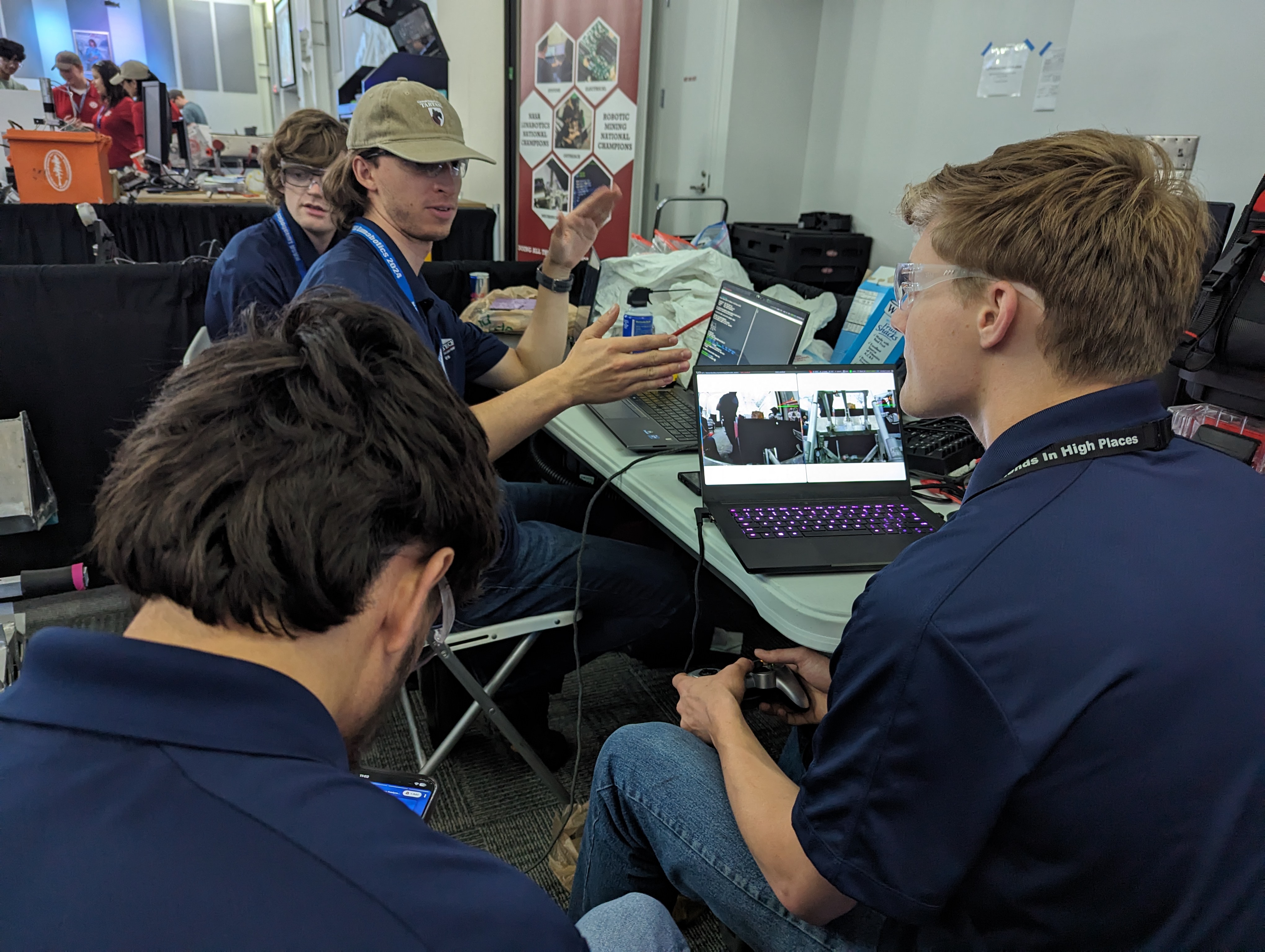
Team discussion and problem solving
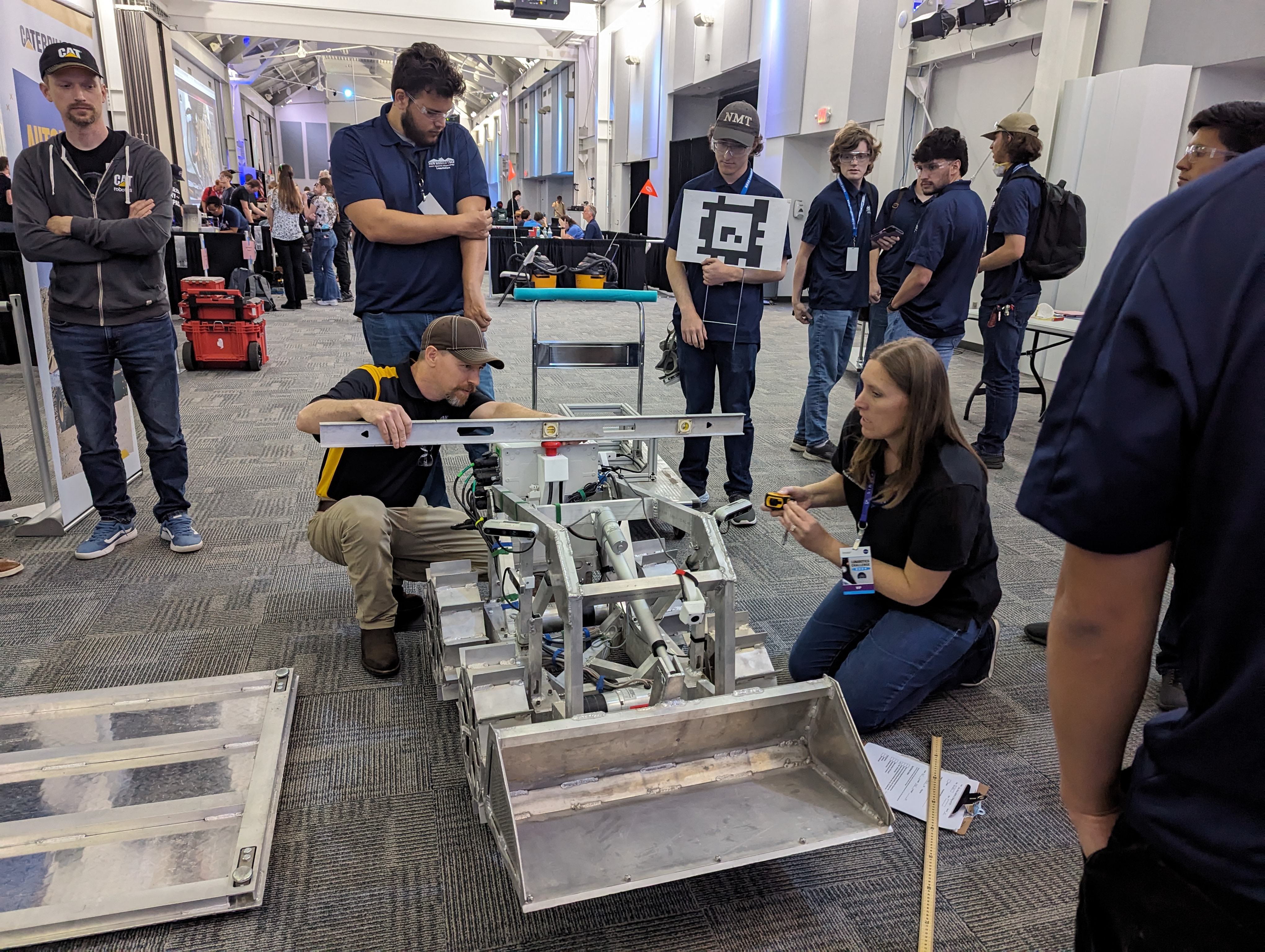
Final measurements--each bot must meet strict tech specs for height, width, length and weight
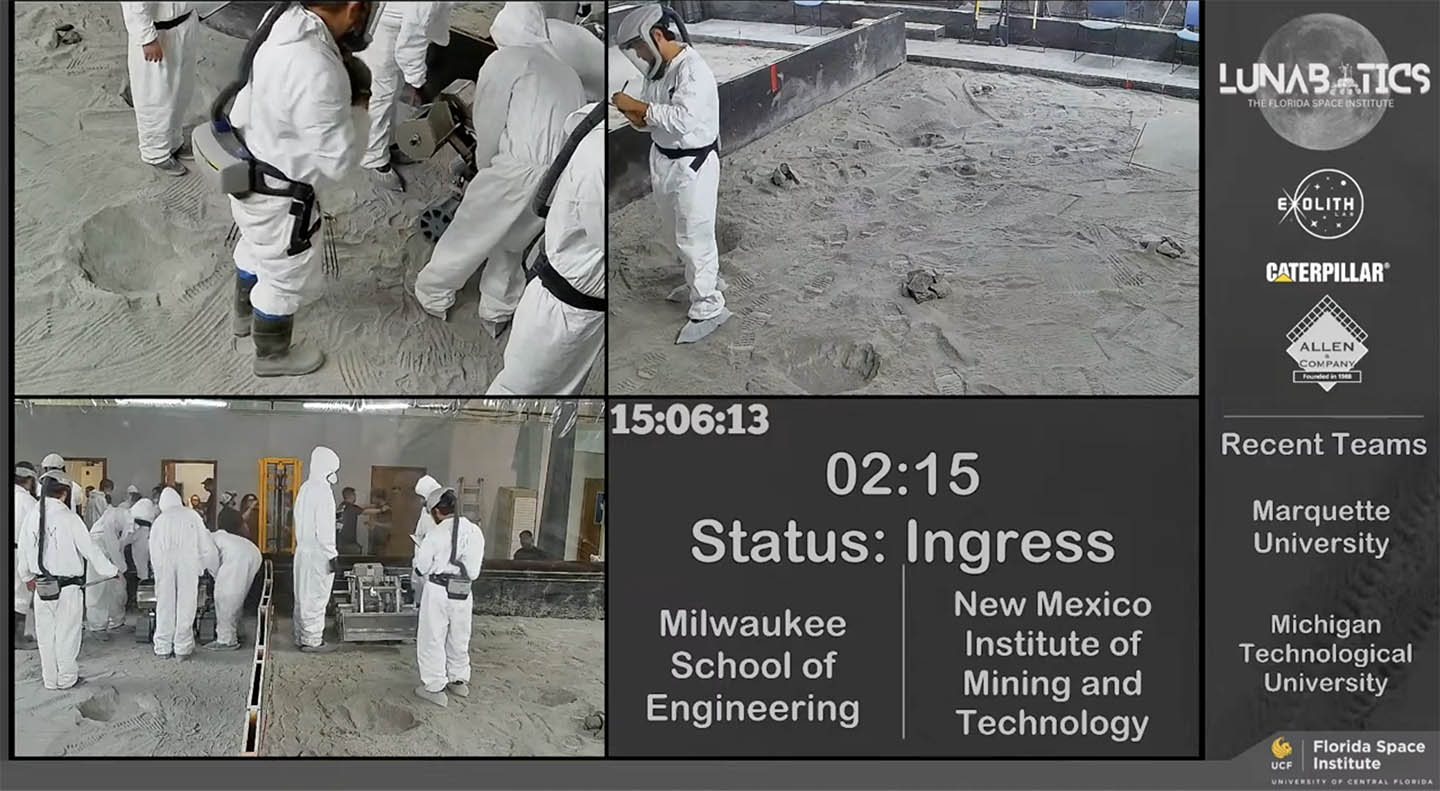
Two minutes before the run!
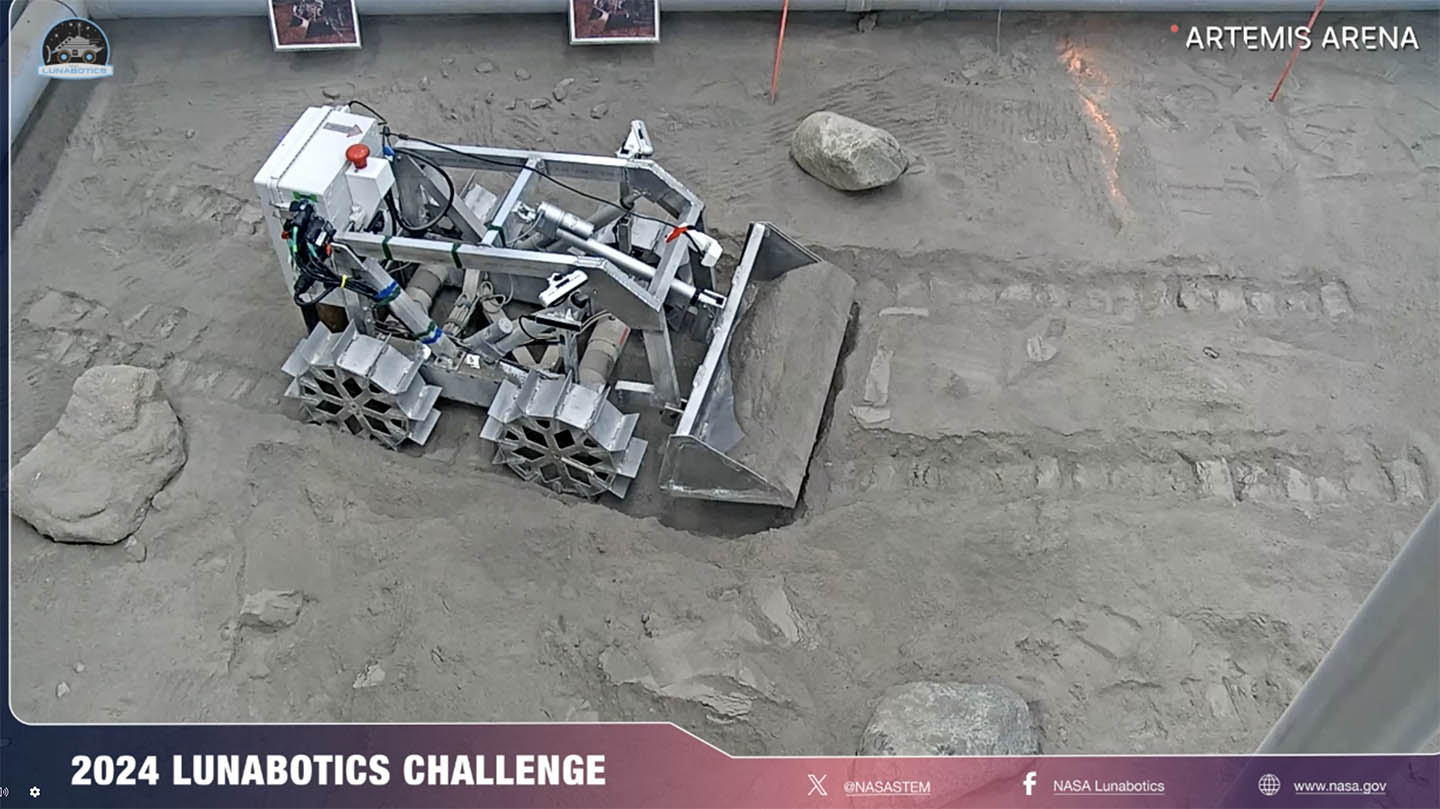
Heading to the drop zone with a load
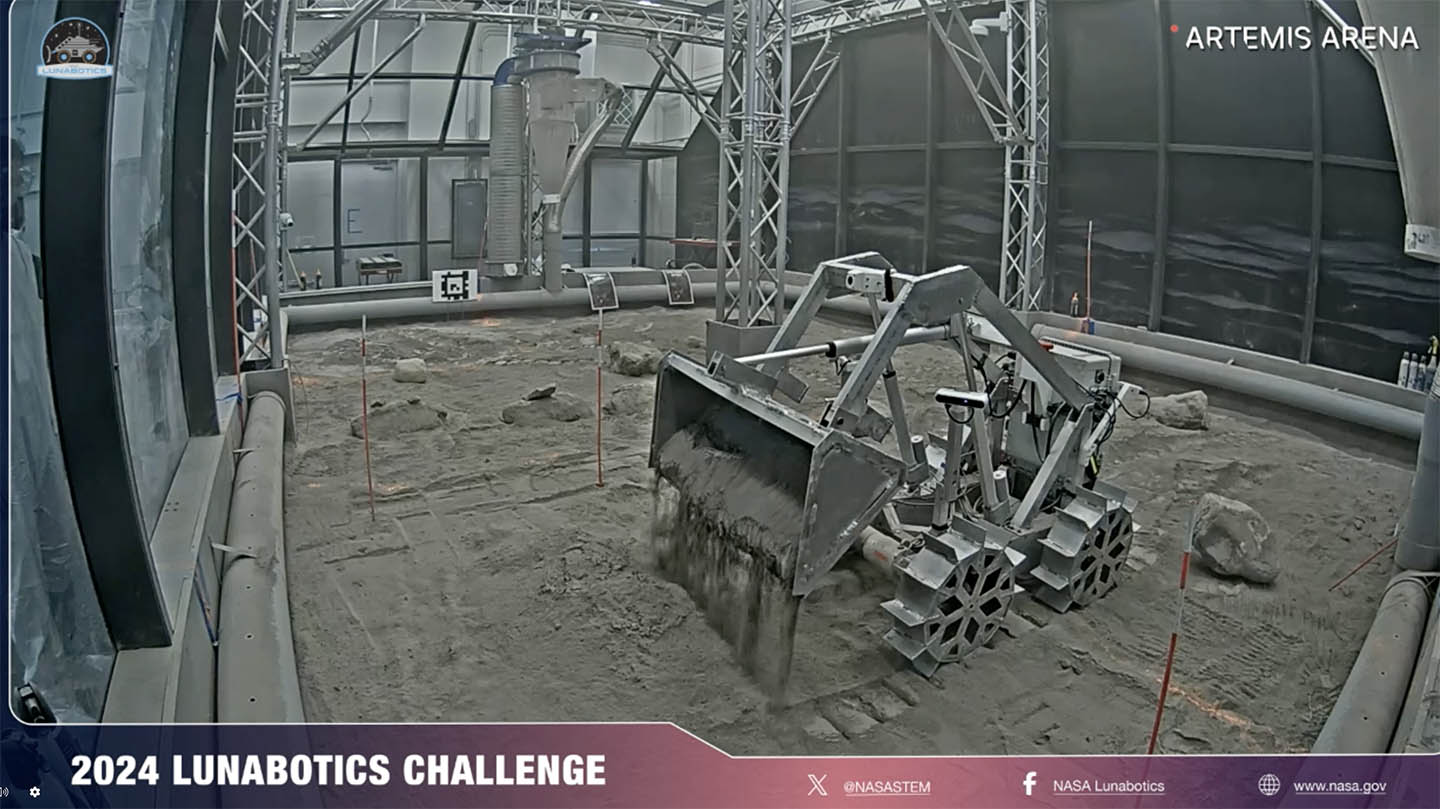
Tipping up the bucket to dump material in the target zone
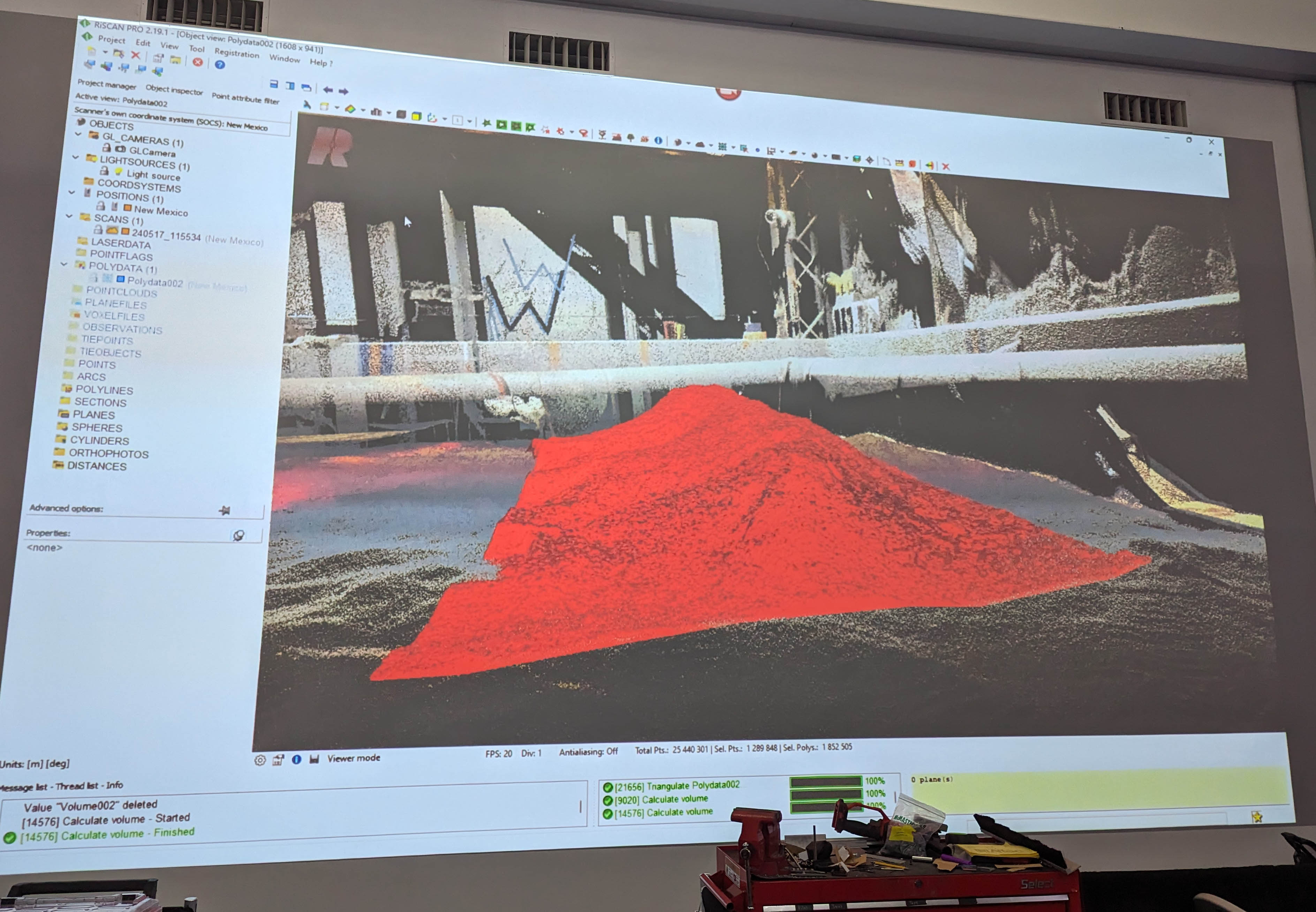
Regolith material deposited by the bot is measured by laser to determine total volume.